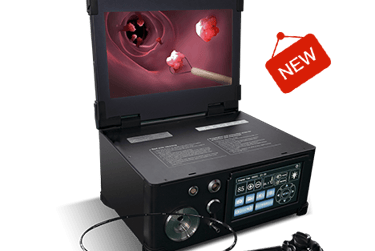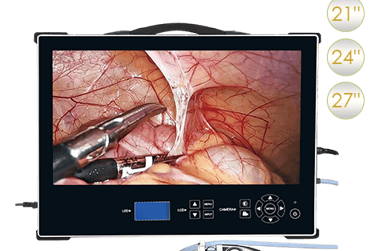📞Customer Service: +86 13248368268 📧servicecenter@suzhoufrank.com one year replacement and warranty!
Revolutionizing ENT Procedures: The Role of Endoscopes and Surgical Instruments
Discover the essential ENT surgical instruments vital for otolaryngology procedures. Enhance surgical precision and patient outcomes with quality tools.
Dr. Fang Ming
11/25/20254 min read
Summary:
In the realm of medical imaging, especially in ENT procedures, endoscopes and related surgical instruments play a pivotal role. The advent of endoscopy has revolutionized the way ENT surgeons diagnose and treat a wide range of conditions with minimal invasiveness. This article explores how ENT instruments, ENT surgical instruments, and laparoscopy instruments are used in conjunction with endoscopes to enhance precision and improve surgical outcomes.
Full Article:
Revolutionizing ENT Procedures: The Role of Endoscopes and Surgical Instruments
When it comes to diagnosing and treating diseases of the ear, nose, and throat, precision is key. One of the most transformative tools in modern ENT (Ear, Nose, and Throat) surgeries is the endoscope. This specialized instrument allows surgeons to visualize internal structures without making large incisions, offering both diagnostic clarity and therapeutic capabilities.
In this article, we examine the crucial role of ENT instruments and ENT surgical instruments in endoscopic procedures, alongside the integration of laparoscopy instruments for minimally invasive surgeries in the ENT field.
What are the Key ENT Instruments Used in Endoscopic Procedures?
Endoscopes, often used in combination with other ENT surgical instruments, are vital in conducting minimally invasive procedures. Some of the most common ENT instruments used with endoscopes include:
Endoscopic Speculums: These instruments help to dilate nasal or ear passages, allowing for clearer visualization during an endoscopic examination. The design of the speculum ensures that delicate areas are handled with care while providing the surgeon with the best possible view of the target area.
Forceps and Biopsy Tools: Once the area of interest is clearly visible, forceps are used to grasp tissues or foreign bodies. Specialized endoscopic forceps can be used to remove samples for biopsy or to extract small objects from the ear, nose, or throat without causing unnecessary trauma.
Endoscopic Scissors: These finely crafted scissors are used to cut tissues during procedures. The precision of the scissors is essential, as the surgeon is often working within confined spaces with a high risk of damaging surrounding tissues.
Suction Devices: Endoscopic suction tools help to remove fluids, blood, and debris, ensuring that the surgical area remains clear during procedures. This is particularly important in endoscopic sinus surgeries and nasal endoscopies, where maintaining visibility is crucial.
How Do Laparoscopy Instruments Complement Endoscopic ENT Surgeries?
Though commonly associated with abdominal procedures, laparoscopy instruments have found valuable applications in ENT surgeries, particularly for minimally invasive procedures. The principles of laparoscopy, using small incisions and high-definition imaging, translate well into the ENT field, enabling surgeons to perform intricate surgeries with less pain and faster recovery times for patients. Key laparoscopic surgery instruments used in ENT procedures include:
Trocars: These devices create small entry points for laparoscopic instruments, which can then be used to perform delicate surgeries within the body. In ENT procedures, trocars provide the necessary access for tools to reach hard-to-reach areas like the nasal cavity or throat.
Endoscopic Camera Systems: The heart of any endoscopic procedure is the camera system. High-definition cameras provide clear, real-time images of the surgical site, allowing surgeons to navigate with precision. These systems are often integrated into laparoscopy instruments to deliver the best visual clarity.
Dissectors and Graspers: Once the entry points are established, laparoscopy instruments such as dissectors and graspers allow the surgeon to manipulate tissues, guiding them into the correct position while minimizing trauma to surrounding areas.
Energy Devices: Laparoscopic energy devices, such as electrocautery or laser tools, are used to cut, coagulate, or cauterize tissue during endoscopic surgeries. These tools are invaluable in reducing bleeding and promoting faster recovery.
The Importance of Innovation and Quality in Endoscopic Instruments
The success of ENT instruments and laparoscopy instruments in endoscopic procedures is not just about the tools themselves but their ongoing development. With each technological advancement, the precision, durability, and ergonomics of these instruments continue to improve. For instance, modern ENT surgical instruments now feature ergonomic designs to reduce hand fatigue, high-quality materials that resist wear, and enhanced functionality for specific procedures.
Endoscopy is no longer just a diagnostic tool but a surgical technique that provides a minimally invasive alternative to traditional surgery. The ability to make small incisions, combined with real-time imaging, allows for faster recovery times and fewer complications.
Conclusion: The Future of Endoscopic ENT Surgery
In summary, ENT instruments, ENT surgical instruments, and laparoscopy instruments have transformed how ENT specialists approach a range of conditions, from routine diagnostics to complex surgeries. By integrating endoscopes into these procedures, surgeons can achieve higher precision, reduce recovery times, and improve patient outcomes.
As technology continues to evolve, so too will the capabilities of endoscopic and laparoscopic instruments. The future of ENT surgery is poised to become even less invasive and more accurate, offering better outcomes for patients and greater confidence for surgeons.
Authorship and Credentials:
Dr. Fang Ming, MD, FACS, is an internationally recognized otolaryngologist with over 15 years of experience in the field. Specializing in minimally invasive endoscopic and laparoscopic surgeries, Dr. Smith has authored numerous publications on advancements in surgical instruments and their role in enhancing ENT procedures. She is also a key member of several medical societies focused on otolaryngology and surgical innovation.
© 2025. All rights reserved.
About Us
Introduction
Development
Cooperation
Service
Main Products
Medical Grade Monitor
No 15, Jinyang road KunshanSuzhou, Jiangsu, China






